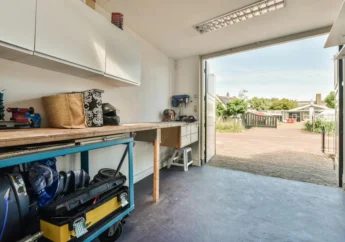How A Startup Used 3D Printing to Build A House in Less Than 24 Hours?
by Abdul Aziz Mondal Real Estate Published on: 28 September 2018 Last Updated on: 12 May 2025

It is obvious that 3D printing is changing everything that we thought about printing. Everything is continuously changing in the field of printing with a significant number of people and industries set to benefit. The process of making physical objects in the 3-dimensional digital model was seen as something of the next generation. However, laying many thin materials in succession to form a physical object is something that is within our reach today. This conclusion can be made after a San Francisco startup, ApisCor, built a house in Russia using 3D printing technology.
Rapid Printing:

The Need for Portable Printing:
ApisCor, which is the company that built this structure, did so with a mobile 3D printer. This is a clear indication that there are mobile printers that can perform works of such magnitude and remain effective despite the current notion that a fixed 3D printer offers efficiency and effectiveness as compared to the new mobile printers that have been brought into the business. The 3D portable printer performed almost all the tasks including printing out the concrete walls, building envelope, and partitioning the house. The workers were called upon only to perform lighter duties that would not take much time either.
The only thing that was done manually by the workers was the installation of various fixtures and fittings that could not be done through the 3D printing technology. For example, workers were required to install the roofing materials, manually paint the building, and other essential components of the structure which would improve its functionality such as thermal insulation, hydro-acoustic, and wiring. This clearly demonstrates that 3D printers can perform most of the tasks involved in constructing a house, after which the final touches will be done manually.
Cozy but Quick and Inexpensive:
The resulting structure was a 400-square-foot house which is as big enough is a standard hotel in a middle-income town. It may not be a mansion or a bigger bungalow, but it’s a good house for those families or individuals who have an affinity for smaller homes. According to the ApisCor, the whole structure cost around $10,134, which is a reasonable cost for such a house. Most of the $10,134 was used in the installation of state of the art doors and windows, which required special materials and took some time before being printed out. However, these cost does not include the cost of the land, which could be very high, depending on the location.

Shifting the Future of 3D Printing Tech:
Initially, we had seen this technology being used in performing small tasks such as making prototypes, making replacement parts for items around the house, and also print a 3D structure for your kids to enjoy at home. The primary benefit of this technology is that it will help individuals and manufacturing organizations to minimize the cost of labor and material while saving much time. Homemaking and repairing organizations are likely to embrace this technology and offer homes to their clients within a single day.
However, in as much as this technology is effective and efficient, speeding the concrete curing process is a necessity in specific climates. Concrete curing blankets (like the ones from Powerblanket) are often needed for temperature control. Some climatic conditions might be too cold and others too warm which will negatively affect the concrete drying process. Controlling temperatures will help the concrete to cure and dry at required temperatures hence printing the desired house.
Read Also:




































































































All Comments
https://cuocsongquanhta.webflow.io/posts/thuoc-cuong-duong
Nice post. I learn something totally new and challenging on websites I stumbleupon on a daily basis. It's always useful to read content from other writers and use something from other web sites.
disneyplus.com/identity/begin
whoah this weblog is magnificent i really like studying your articles. Stay up the great work! You understand, a lot of persons are searching round for this information, you could aid them greatly.
phòng khám nha khoa singae dental
Write more, thats all I have to say. Literally, it seems as though you relied on the video to make your point. You clearly know what youre talking about, why throw away your intelligence on just posting videos to your blog when you could be giving us something enlightening to read?
Pornô Online
I am really inspired along with your writing talents as well as with the structure on your weblog. Is this a paid theme or did you customize it your self? Anyway keep up the nice quality writing, it is uncommon to peer a great weblog like this one these days..